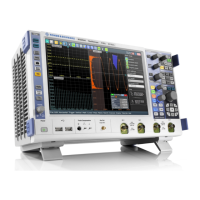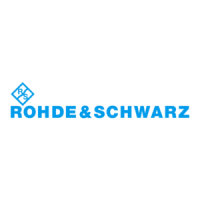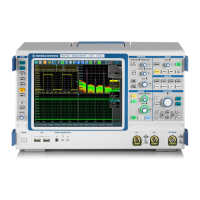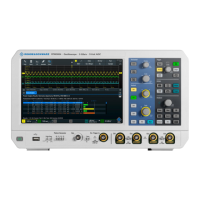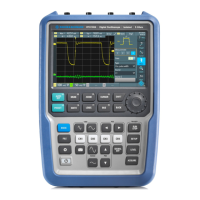Serial Bus Analysis
R&S
®
RTB2000
208User Manual 1333.1611.02 ─ 04
LIN characteristics
Main characteristics of LIN are:
●
Single-wire serial communications protocol, based on the UART byte-word inter-
face
●
Single master, multiple slaves - usually up to 12 nodes
●
Master-controlled communication: master coordinates communication with the LIN
schedule and sends identifier to the slaves
●
Synchronization mechanism for clock recovery by slave nodes without crystal or
ceramics resonator
The R&S RTB2000 supports several versions of the LIN standard: v1.3, v2.0, v2.1 and
the American SAE J2602.
Data transfer
Basic communication concept of LIN:
●
Communication in an active LIN network is always initiated by the master.
●
Master sends a message header including the synchronization break, the synchro-
nization byte, and the message identifier.
●
The identified node sends the message response: one to eight data bytes and one
checksum byte.
●
Header and response form the message frame.
The data is transmitted in bytes using the UART byte-word interface without the parity
bit. Each byte consists of a start bit, 8 bits and a stop bit.
Figure 12-25: Structure of a byte field
Data bytes are transmitted LSB first.
The identifier byte consists of 6 bits for the frame identifier and two parity bits. This
combination is known as protected identifier.
Trigger
The R&S RTB2000 can trigger on various parts of LIN frames. The data line must be
connected to an input channel, triggering on math and reference waveforms is not pos-
sible.
You can trigger on:
●
Frame start (synchronization field)
●
Specific slave identifier or identifier range
●
Data pattern in the message
●
Wake up signal
LIN (Option R&S
RTB-K3)
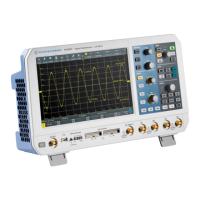
